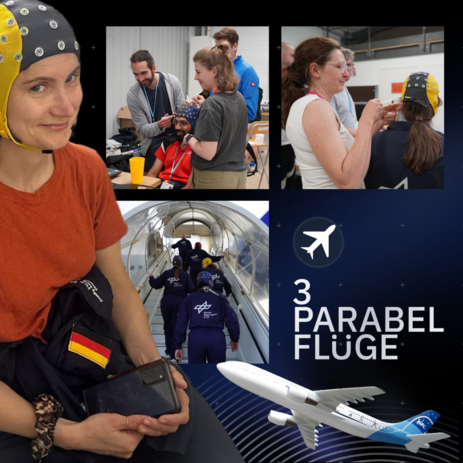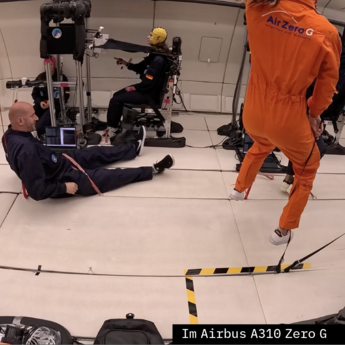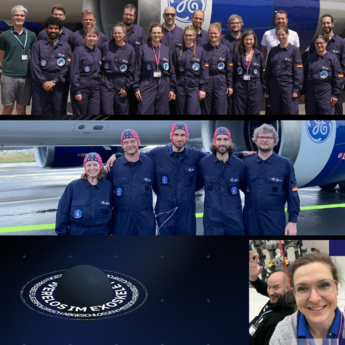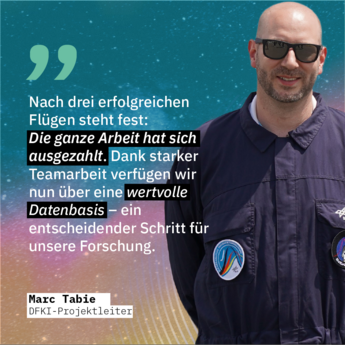
Parabolic flight with exoskeleton: DFKI and University of Duisburg-Essen explore innovative spaceflight training in microgravity
| Press release | Machine Learning & Deep Learning | Human-Machine Interaction | Robotics | Robotics Innovation Center | Bremen
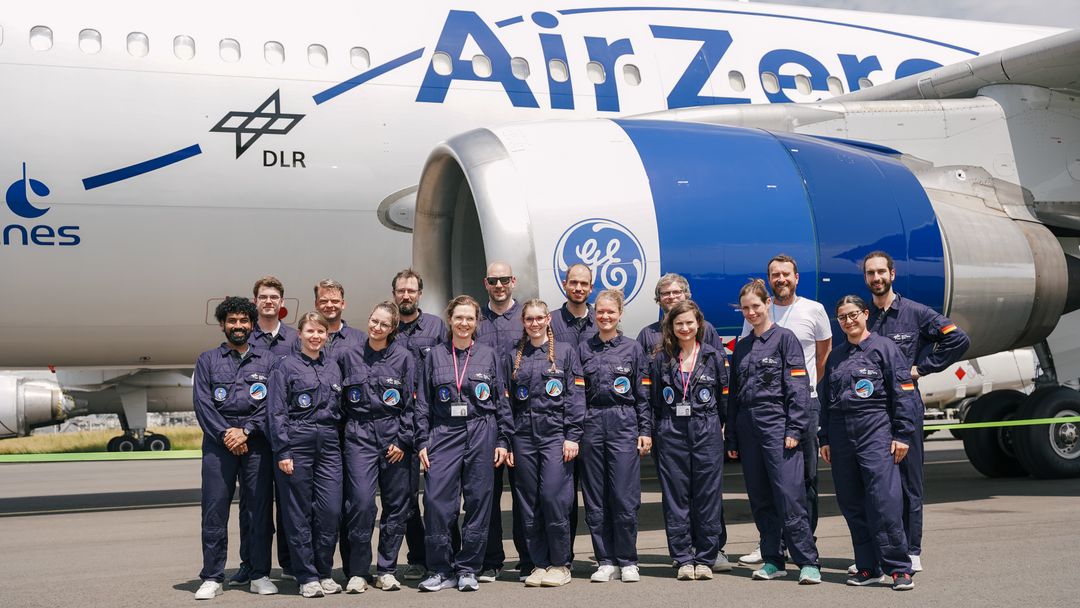
In space, astronauts often have to carry out delicate tasks such as repairs or experiments, which are made significantly more difficult by weightlessness. Training these fine motor skills is crucial for increasing mission efficiency and ensuring crew safety. Until now, such training has primarily taken place during parabolic flights or underwater exercises in a spacesuit.
Innovative space training with exoskeleton
As part of the INNOSpace network "Space2Health" – an initiative of the German Space Agency at DLR, funded by the Federal Ministry for Economic Affairs and Energy (BMWE) – the DFKI Robotics Innovation Center and the Chair of Medical Technology Systems at UDE are developing a realistic and cost-effective alternative: an active exoskeleton that compensates for the weight of the arms by providing targeted force assistance, creating a movement experience similar to weightlessness.
Second participation in parabolic flight campaign
The team had previously participated in the 42nd DLR parabolic flight campaign in 2024 at Bordeaux-Mérignac Airport to collect initial comparative data. While results were promising, they lacked statistical reliability. Under the current "MikroBeM" project, the team returned aboard Novespace’s Airbus A310 ZERO-G for the 44th campaign in June 2025.
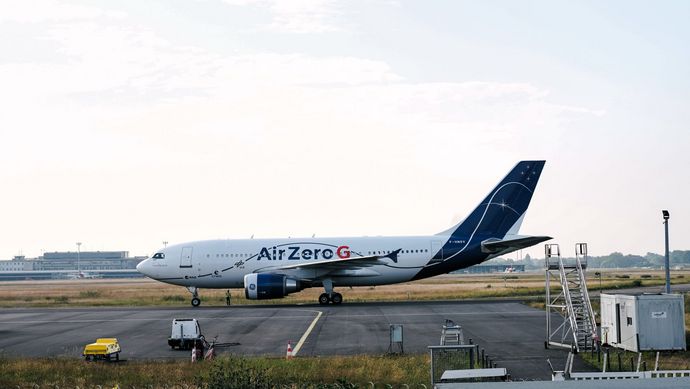
Parabolic flights are conducted in a specially modified Airbus A310, which simulates microgravity for approximately 22 seconds during each maneuver. The aircraft climbs steeply at about 45 degrees, follows a free-fall parabola, and then descends in a controlled glide before repeating the sequence. Typically, 31 parabolas are flown per flight, resulting in a total of approximately eleven minutes of weightlessness per session. Flights for the current campaign took place on June 10, 11, and 12, 2025.
Exoskeleton experiment: goal and execution
The exoskeleton study was one of ten selected research projects on board. Its goal was to assess whether fine motor training using an exoskeleton under simulated conditions is effective enough to transfer learned skills to real microgravity – potentially reducing astronaut workload in future missions. Initial findings from the 2024 campaign support this possibility.
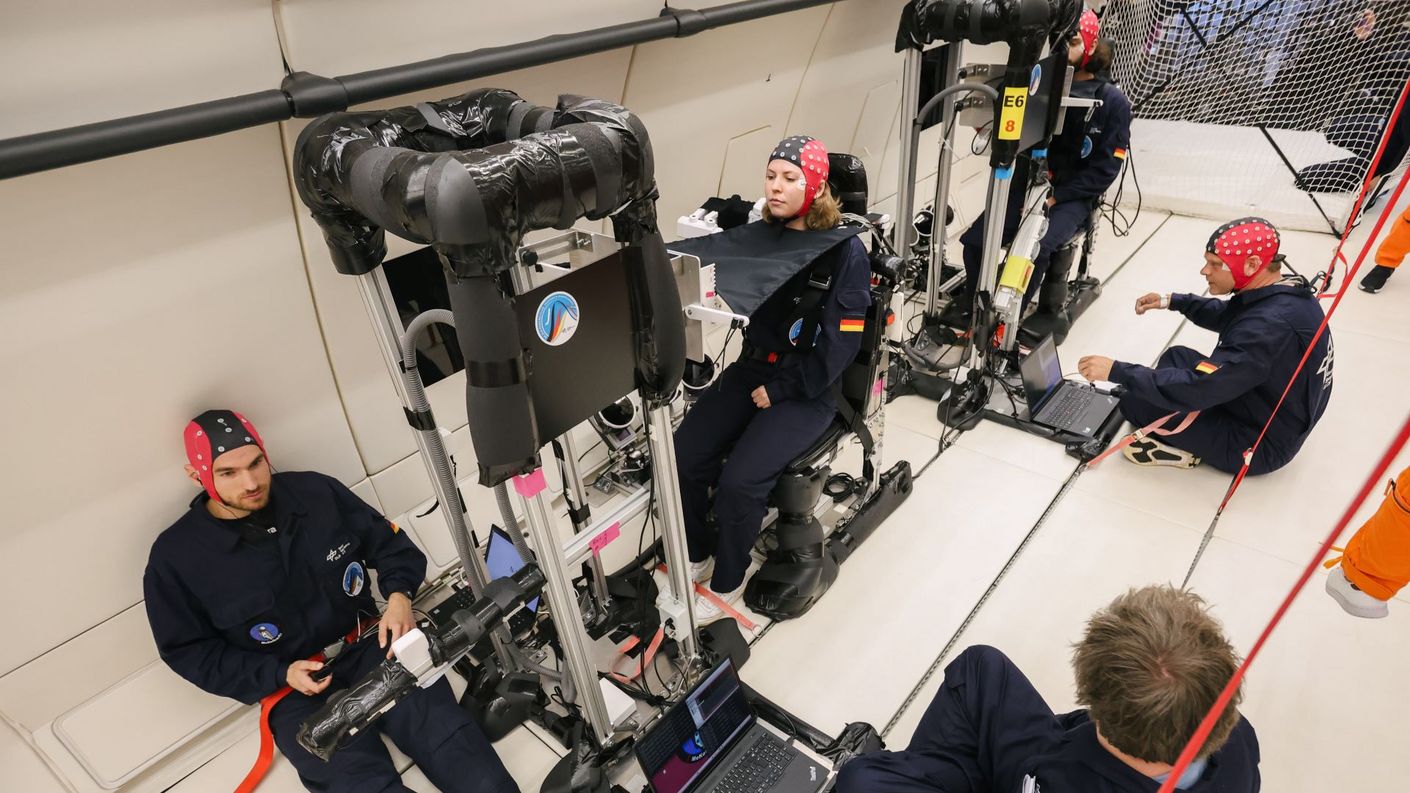 © Novespace
© NovespaceTwo identical experimental setups onboard allowed two test subjects to participate per flight. A passive exoskeleton was used during flight. Six participants, strapped in place, were instructed to use the index finger of the exoskeleton-guided arm to touch the center of a target on a touchscreen during weightlessness. A cape covered the arm to isolate motor learning from visual feedback.
Half of the participants had trained the task in the lab using an active exoskeleton, while the other half had only been familiarized with the setup. During flight, researchers recorded muscle and brain activity, heart rate variability, and movement trajectories. A fully equipped backup participant was on standby to step in if anyone experienced discomfort.
Smooth execution and high-quality data
The experiment ran without technical or organizational issues on all three flight days. An impressive 276 out of 279 planned datasets were successfully recorded—an exceptionally high number that enables robust scientific analysis.
Marc Tabie, project lead at DFKI, draws a very positive conclusion:
“After months of intensive preparation, we are thrilled that all three flights went so smoothly. The entire team performed excellently under challenging conditions. We now have a broad, high-quality data set. Many thanks to everyone who made this possible.”
Contact
Andreas Schepers
Corporate Spokesman
Phone: +49 30 23895 1830
andreas.schepers@dfki.de
Deutsches Forschungszentrum für Künstliche Intelligenz GmbH (DFKI)
Alt-Moabit 91c
10559 Berlin
Deutschland


